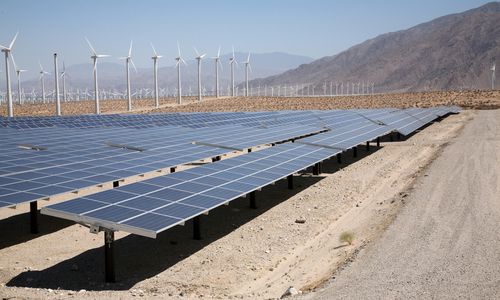


For the first time, a large fraction of the world’s fossil fuels could be replaced at a lower cost by clean energy, with today’s renewable technologies and prices. And virtually no further investments in fossil fuels make long-term economic sense because higher fossil fuel prices over their useful life will be exorbitant.

Early awareness of that reality is driving major energy growth markets to look past the fossil fuel monopoly of the 20th century. The newly elected, pro-business Indian government of Narendra Modi, as its first policy initiative, promised to provide roof-top solar to 400 million off-grid citizens. Modi is also slashing fossil fuel subsidies with their skyrocketing fiscal and trade deficits from imported coal and oil. The Chinese government signaled its intent to cap overall CO2 emissions in its next five-year plan.
The private sector is joining in. Barclay’s Bank recently downgraded the entire U.S. utility sector in fear that it would not respond to the disruptive challenge of distributed solar. Global banks are abandoning their intended financing of a major coal port at Abbot Point in Australia. International oil companies, after binging on ever more expensive and extreme oil plays pulled back sharply, as mega-project after mega-project was cancelled or delayed. “We have to curb costs, as we can’t count on oil and gas prices’ continuing to rise,” Total’s chief executive Christophe de Margerie told investors. Total was joined by BP, Chevron, Shell, Statoil. Even giant Exxon sold off its major investments in U.S. light-tight oil.
The latest Bloomberg New Energy Finance projection suggests that two-thirds of incremental global power generation over the next 15 years will come from renewables. Declines in coal use in developed economies will be sharp enough to cut the global share of fossil fuels from 64 percent today to only 44 percent in 2030.
Until recently transportation was different—there were no cheaper clean alternatives to oil except for shifting from road to rail. But the electric vehicle revolution, partnered in the U.S. with cheaper shale gas, means that oil at $110 a barrel is no longer the cheapest fuel—EV’s, natural gas and ethanol are already cheaper for the driver. Goldman Sachs projects that with intelligent policy support—not subsidies—40 percent of the U.S. light duty fleet would be EV’s by 2050, with internal rates of return above 15 percent.
While these sound like large numbers, they are clearly inadequate from a climate perspective—worse, they are far lower market shares for clean energy than least-cost economics would warrant. The Bloomberg power projection, for example, still leaves the world investing $2.6 trillion in fossil fuel electrical generation, mostly natural gas in the U.S. and coal in Asia. Bloomberg expects that coal will increase its market share in the Indian and Chinese power sectors—even though it would be cheaper for these countries to move towards renewables much more rapidly, because wind and solar will be cheaper at the margin than coal and gas for most of the lifetime of any new power plants built in the future.
In country after country, fossil fuels still retain market share no longer justified by cost—the precipitous drop in the price of renewables, accompanied by the escalating marginal cost of extracting oil, gas and coal, have created a fundamentally new market dynamic in which fossil fuels hold on in spite of the fact that they are more expensive, not cheaper.
These “renewable edge” markets are now much bigger than the current renewable share. Electricity currently provides only one percent of global transportation energy; EV’s and rail could today replace the first 15 percent of the oil used by cars and trucks at with an internal rate of return higher than 15 percent. Fossil fuels generate 63 percent of the world’s power, renewables less than 5 percent, but one-third of fossil electricity now costs more than competing wind and solar. Older, outmoded coal plants, along with electrons generated by oil, LNG and marine coal no longer make economic sense. Profitable building retrofits would cut fossil fuel used for heating and cooling by 20 percent, and displace another 15 percent of fossil fuel electricity demand.
Fossil fuels are thus no longer the lowest cost energy source in enough of the world’s energy markets to enable disruptive clean energy technologies to scale at a rate which would give them overwhelming market-wide competitive advantages in a relatively short time frame—if markets responded competitively to price signals. But incumbent energy markets may not in fact harvest much of this renewable edge, because they are not price driven.
Why are investors poised, according to Bloomberg, to put $2.6 trillion into new fossil fuel power plants? Why is the oil industry still investing $674 billion a year in looking for new, and increasingly unaffordable, reserves? Why is investor behavior lagging price signals?

 233k
233k  41k
41k  Subscribe
Subscribe 